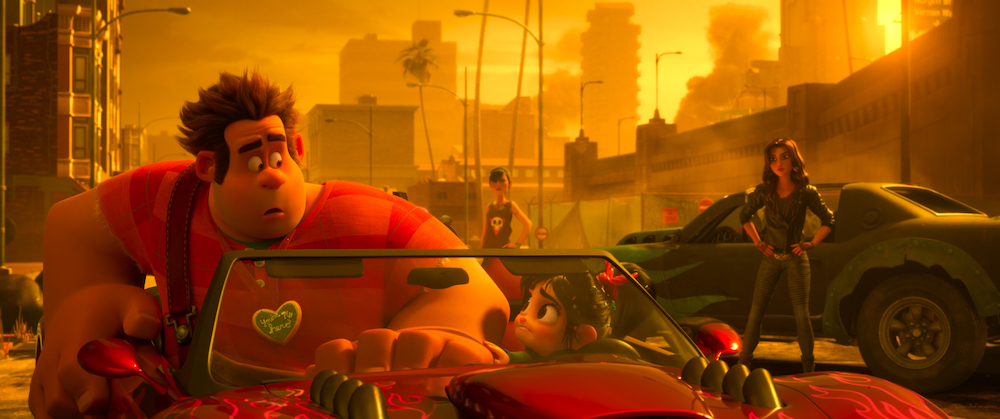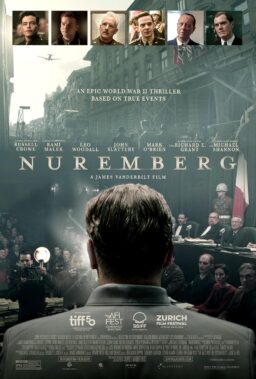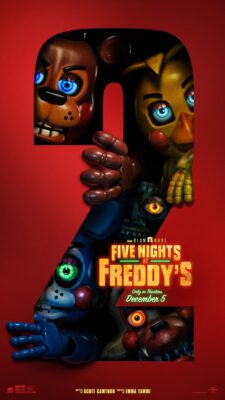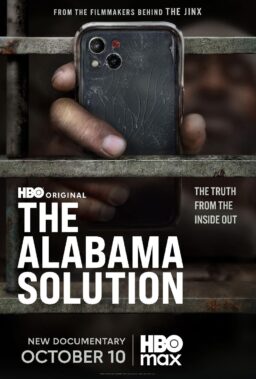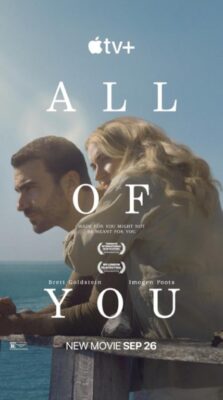Growing up during ‘90s Disney Renaissance, one of my family’s favorite cassettes tapes to listen to as we drove to and from school every morning was a collection of Disney villain songs. There was something deliciously infectious to the nefarious do-badders warbling their evil plans. My mom, a life-long church choir singer, could belt out Ursula the Sea Witch’s bouncy-yet-gothic “Poor Unfortunate Souls” like a Broadway diva while I prided myself on my Jeremy Irons’ impression while singing Scar’s fascist show-stopper “Be Prepared.”
The only villain song we ever skipped was Claude Frollo’s “Hellfire” from “The Hunchback of Notre Dame,” a choice having less to do with our religious background than the fact that, unlike the succulent campiness of the other songs, it sounded genuinely sinister and scary. The piece broke the illusion cast by Disney’s rogues gallery—one of playful malevolence, of Iarger-than-life wickedness too cartoonish to be real, but not cruel enough to be unidentifiable. “Walt Disney wanted to have the villains in his animated films be interesting,” Disney animator Andreas Deja explained in a special feature in the Blu-ray release of “Sleeping Beauty,” “there had to be something about them that you recognize as a human quality, something that is beyond just bad.” We might never actually want to cheat, steal, or murder, but who couldn’t envy Gaston’s ruggedness? Hades’ fast-talking charisma? Maleficent’s authoritative majesty and power?
Having caught on to the legions of fans who prefer the bad guys over the good, Disney has transformed their villains into a franchise unto themselves, establishing official fashion brands and merchandise focusing exclusively on their scintillating scoundrels. But with the undeniable (and lucrative) success of Disney’s villains, a simple question must be asked: where have they all gone in recent years? Part of this can be attributed to Disney’s recent departure from the traditional musical format for their animated films: both “Big Hero 6” (2014) and “Zootopia” (2016) aren’t musicals and feature villains who remain largely in the shadows until the last act. Additionally, their last two Disney princess films, “Frozen” (2013) and “Moana” (2016), were musicals but didn’t feature traditional villains like Cinderella’s evil stepmother Lady Tremaine or Jasmine’s court adversary Jafar.
Then there’s Disney’s latest animated movie “Ralph Breaks the Internet,” the a film which shockingly has no villain at all. A sequel to their Academy Award-winning “Wreck-It Ralph” (2012), the film continues the adventures of eponymous bad-guy-turned-good-guy from classic arcade game “Fix-It Felix Jr.” and his best friend Vanellope von Schweetz as they embark on a monomythic journey into the Internet to find a new part for Vanellope’s broken arcade cabinet. Their story is one of self-discovery, with Vanellope’s arc mimicking those of the Renaissance princesses like Ariel, Belle, and Mulan who desired more out of their unfulfilling lives—in her case wanting to escape her predictable arcade game for the spontaneity of hyper-violent online racing game Slaughter Race. (In one of the film’s best punchlines, she’s coached by the other princesses into triggering her own What I Want Out Of Life song that appears in the first act of nearly every princess movie. Indeed, it’s the only song in either “Wreck-It Ralph” movie.)
<span class="s1" <then="" there’s="" disney’s="" latest="" animated="" movie="" “ralph="" breaks="" the="" internet,”="" which="" shockingly="" has="" no="" villain="" at="" all.="" a="" sequel="" to="" their="" academy="" award-nominated="" “wreck-it-ralph”="" (2012),="" film="" continues="" adventures="" of="" eponymous="" bad-guy-turned-good-guy="" from="" classic="" arcade="" game="" “fix-it-felix="" jr.”="" and="" his="" best="" friend="" vanellope="" von="" schweetz="" as="" they="" embark="" on="" monomythic="" journey="" into="" internet="" find="" new="" part="" for="" vanellope’s="" broken="" cabinet.="" story="" is="" one="" self-discovery,="" with="" arc="" mimicking="" those="" renaissance="" princesses="" like="" ariel,="" belle,="" mulan="" who="" desired="" more="" out="" unfulfilling="" lives—in="" her="" case="" wanting="" escape="" predictable="" spontaneity="" hyper-violent="" online="" racing="" game
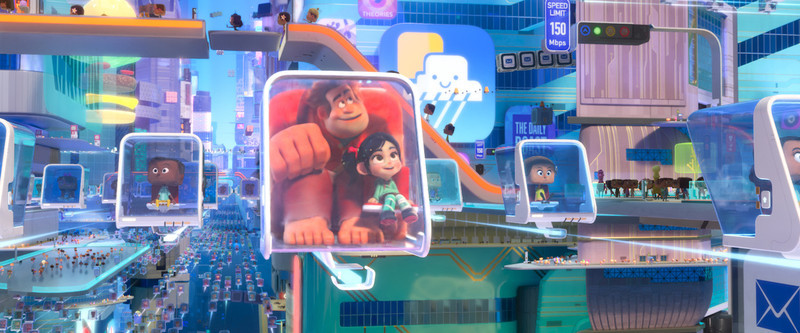
If Vanellope’s arc is inherently existential, then Ralph’s is intrinsically emotional as he struggles with the idea that friends can lead separate lives from each other and still remain friends. In his confusion, he ends up almost killing her by releasing an “Insecurity Virus” into Slaughter Race, intending for it to throttle the game and make it boring. When the Virus escapes the game, it latches onto Ralph, replicating the “insecurities” in his code to create an army of zombie Ralphs who want to capture Vanellope, finally joining together to create a skyscraper-sized kaiju-Ralph hellbent on destroying everything in its way. Ralph becomes the villain in his own story.
Remarkably, Ralph doesn’t defeat this evil clone by destroying or out-smarting it, but by forcing it to confront its own psychological fears of separation from Vanellope. It’s perhaps the most nuanced take on an antagonist in any recent Disney film, centered in the realization that our own toxic behavior can make us literal or metaphorical monsters. It’s only by confronting our “insecurities” head-on that we can prevent this from happening and repair the damage for when it inevitably does. It’s a noble lesson for small children.
But I doubt we’ll ever see kaiju-Ralph appear in a Disney theme park. Or on a compilation album of great villain songs. He’s a villain, yes, but not a Villain with a capital “V.” How did this transformation from the larger-than-life villains that dominated Disney films for nearly 70 years occur? The answer is simple: Pixar.

For its first few years as an independent animation studio, Pixar modeled its villains on the traditional Disney variety. Their first two films “Toy Story” (1995) and “A Bug’s Life” (1998) had evil maniacs the heroes needed to defeat, respectively a hyper-violent, toy-destroying child and the leader of a predatory grasshopper gang. But then came “Toy Story 2” (1999) and the introduction of the bait-and-switch villain. For most of the movie, the audience is led to believe that the villain is Al McWhiggin, a greedy toy collector who steals the heroes Woody, Buzz Lightyear, and their friends with the intention of selling them to a Japanese toy museum. But in the third act something strange happens: one of the friendly supporting characters, Stinky Pete the Prospector (pictured above), betrays the heroes and sabotages their efforts to escape McWhiggin. It was an effective, unexpected twist that worked in large part because the film had built up Stinky Pete’s character with a tragic backstory that made us sympathize with his hatred for toys like Woody and Buzz who had loving owners. It added a new layer of nuance to the traditional hero/villain dynamic by suggesting that the most wicked among us might be products of broken lives, not evil megalomaniacal tyrants you could spot miles away.
<span class="s1" <the="" bait-and-switch="" villain="" became="" a="" staple="" of="" the="" pixar="" formula,="" with="" each="" implementation="" adding="" more="" and="" unexpected="" depth="" to="" their="" family="" friendly="" charmers.="" “monsters="" inc.”="" (2001)="" tricked="" us="" into="" believing="" hyper-competitive="" steve="" buscemi-voiced="" chameleon="" is="" before="" revealing="" true="" baddie:="" avuncular="" ceo="" titular="" company="" who’d="" rather="" kill="" his="" best="" employees="" than="" risk="" harming="" profit="" margin.="" “the="" incredibles”="" (2004)="" blindsided="" audiences="" third="" act="" revelation="" that="" superhero-killing="" syndrome="" was="" one-time="" wannabe="" sidekick="" mr.="" incredible.="" silent="" comedy="" sci-fi="" romance="" hybrid="" “wall-e”="" (2008)="" made="" an="" incredible="" statement="" on="" pessimism="" being="" anathema="" spirit="" science="" human="" endeavor="" by="" turning="" seemingly="" benevolent="" ai="" program="" entitled="" auto="" in="" antagonist="" last="" having="" it="" attempt="" scuttle="" heroes’="" attempts="" return="" prodigal="" species="" planet="" earth.
But by the end of the decade, the bait-and-switch villain had become so integral to the Pixar brand that it’d become perfunctory, with twist villains seemingly crammed into the films with little care concerning whether or not they made sense within the larger context of the story. The most obvious example was “Up” (2009), a film about the bond between a lonely old man and a lonely young boy that gets waylaid in the last 20 minutes by a sudden villain turn by their joint hero, explorer Charles F. Muntz. His dastardly plan feels completely out-of-place in a heartfelt road movie about overcoming grief and finding the courage to love others. Since “Up,” only four of their ten movies have had bait-and-switch villains: Lotso-O’-Huggin’ Bear from “Toy Story 3” (2010); Sir Miles Axlerod from “Cars 2” (2011); Ernesto de la Cruz in “Coco” (2017); and Evelyn Deavor in “Incredibles 2” (2018). The remaining six have demonstrated an increased distancing from villains, both surprise and traditional, almost altogether.
But the era of bait-and-switch villains wouldn’t end with Pixar. Eager to duplicate Pixar’s success after an almost decade-long box office and critical drought, a newly reinvigorated Walt Disney Animated Studios embraced many aspects of the Pixar formula, largely chucking songs out of all but their princess movies and trying to tell more emotionally mature stories. These included the advent of Disney bait-and-switch villains, including “Ralph Breaks the Internet’”s predecessor “Wreck-It-Ralph.” But Disney never quite got the hang of the bait-and-switch villain angle, ultimately failing to make them feel organic to their stories or memorable. The grief-stricken super-villain Yokai in “Big Hero 6” and the race war-baiting sheep Dawn Bellwether in “Zootopia” (2016) were easily the weakest parts of their respective movies, and no matter how memorable the “if only there was someone out there who loved you” Hans reveal in “Frozen” (2013) might have been, there’s no denying that it was contrived and conflicted with the film’s overarching themes of sisterly love and self-empowerment.

But with “Moana” (2016) Walt Disney Studios began to demonstrate their latest imitation of the Pixar method: the abandonment of marquee villains. The closest thing “Moana” had to a traditional villain was volcano demon Te Kā, a corruption of benevolent goddess Te Fiti after her defilement by demigod Maui. Te Kā isn’t so much a conscious antagonist as an impartial (and literal) force of natural destruction; treating her as a scheming, plotting villain is as nonsensical as anthropomorphizing a wildfire or hurricane. Yet despite having the power to control water as a weapon, Moana doesn’t kill the rampaging demon, instead appealing to the goddess buried deep within and healing her, promoting a narrative of compassion, kindness, and feminine solidarity as the keys to helping violated women overcome male-inflicted trauma. (Tamatoa, the greedy coconut crab monster, doesn’t quite count as a villain despite having first authentic Disney villain song in years since he only appears in one scene midway through the film and is promptly forgotten afterwards.)
And now we have “Ralph Breaks the Internet,” which does away with even the antagonistic yet impartial force of destruction of “Moana.” Everything bad that happens to Ralph and Vanellope is a direct result of Ralph’s interference. He changes Vanellope’s game so it ends up getting broken by a player; his ignorance of real-world money is what forces them to loot-hunt once on the Internet, leading them to Slaughter Race; and he’s the one who finds and uses the “Insecurity Virus.” If Disney began with overt villains, adopted bait-and-switch villains, then abandoned villains altogether, then Ralph represents a fourth stage in this continual evolution: the misguided hero. Judging by the film’s critical and financial success, this tentative experiment has proven a successful one. Could these hero-villains be the future of Disney bad guys? Perhaps. But if so, it’s doubtful we’ll be getting anymore villain song compilations anytime soon. And that, in its own way, is a great loss.
